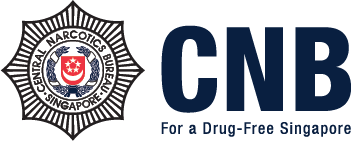Section 1: Singapore's drug control strategy
Singapore’s drug strategy combines strict enforcement, education, rehab, and partnerships to keep the nation drug-free.
Singapore aims to build a drug-free society where people can live, work, and play safely. Our harm prevention and robust control measures are essential for protecting the well-being of all Singaporeans.
Singapore adopts a comprehensive drug control strategy that tackles both drug demand and supply. It involves preventive drug education, tough anti-drug laws, rigorous enforcement, international engagement, and the rehabilitation and aftercare of drug abusers.
Singapore’s stringent approach to drug control has proven highly effective. It has successfully kept the drug problem under control and prevented major drug syndicates from establishing themselves in Singapore. The number of drug abusers arrested annually in Singapore has also fallen to about half that in the mid-1990s.
With Singapore’s strict drug laws, we have not only saved the lives of thousands of potential abusers but also shielded their families from the devastating consequences of drug abuse.
Public support for Singapore's drug policy
There is a clear distinction between the way Singapore treats drug abusers compared to drug traffickers, especially those involved in trafficking substantial amounts of drugs.
Drug trafficking, with its potential to destroy the fabric of society, is met with severe punishment. The death penalty for traffickers is a key component of Singapore’s drug control strategy, sending a powerful message that the government will not tolerate those who profit from the destruction of lives through drugs.
The public’s consistent, strong support for the death penalty reflects a collective commitment to safeguarding the nation against the devastating consequences of the drug trade.
Sources: MHA

Inside the mind of drug trafficker
In a qualitative study conducted by the Singapore Prison Service and Central Narcotics Bureau, drug traffickers were interviewed to gain insights into their decision-making process.
The study identified several key factors influencing their involvement in drug trafficking. These included: (1) individual factors, such as thrill-seeking, impulsivity, and criminal thinking patterns; (2) contextual factors, like a deviant social network and exposure to drug abusers; and (3) situational factors, including financial strain, the desire for money, and the need to sustain their own drug habits.
Sources: MHA

